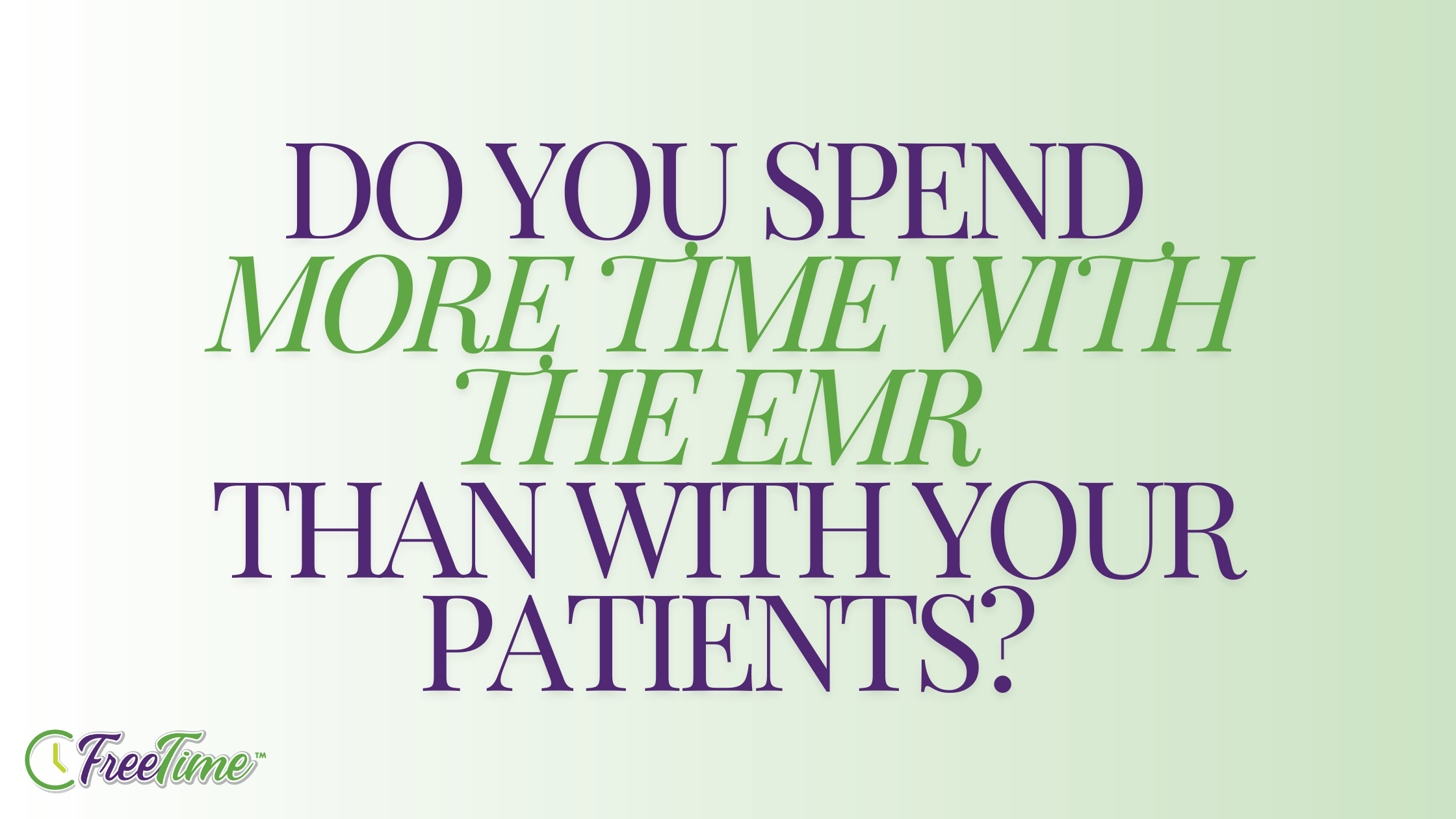A Path to Preventing Burnout

The increasing paperwork required of healthcare providers is a significant concern in today's medical field. This demand for documentation reduces efficiency and contributes to clinician burnout, which is a considerable problem for our healthcare personnel. According to the study "Primary Care Practice Environment and Burnout Among Nurse Practitioners," 25.3% of the 396 primary care nurse practitioners (NPs) surveyed experience burnout, with poor practice environments being strong predictors. One significant aspect of a clinical practice environment is the electronic medical record (EMR) and its required documentation. To enhance job satisfaction and reduce burnout, it is crucial to lessen the documentation demands placed on primary care clinicians. Our visit automation software, FreeTime, offers a much-needed solution by reducing the documentation burden and improving the practice environment.
Understanding the Documentation Burden
Several factors contribute to the documentation burden.
- Time-consuming Data Entry: Clinicians spend excessive time entering data into EMRs, which detracts from patient care.
- Complex Interfaces: EMR systems often have complex, non-intuitive interfaces, making navigation and data entry cumbersome.
- Redundant Tasks: The need to enter the same information multiple times across different parts of the EMR system further exacerbates the time spent on documentation.
This relentless demand for documentation reduces clinicians' time with patients and contributes significantly to clinician burnout.
The Impact of Burnout
Burnout is a state of physical, emotional, and mental exhaustion caused by prolonged stress. The Oldenburg Burnout Inventory (OLBI) is a widely recognized tool for measuring burnout levels. It assesses two core dimensions:
- Exhaustion: Feelings of emptiness, overtaxing, and a need for rest.
- Disengagement: A lack of motivation and enthusiasm for work.
High levels of burnout among clinicians can lead to decreased job satisfaction, higher turnover rates, and, ultimately, a lower quality of patient care.
FreeTime: A Game-Changer in Reducing Documentation Burden
With FreeTime, we recognize the critical need to alleviate the documentation burden on clinicians. Our visit automation software offers several features designed to streamline the documentation process:
- Automated Data Entry: FreeTime reduces clinicians' time on data entry by automatically populating patient information and relevant clinical data. This feature minimizes redundant tasks and allows clinicians to focus more on patient care.
- Intuitive Interface: Our software has a user-friendly interface that simplifies navigation and data entry. By reducing the complexity of the EMR system, FreeTime makes documentation more efficient and less stressful.
- Integrated Workflows: FreeTime seamlessly integrates with existing EMR systems, ensuring clinicians do not need to enter the same information repeatedly. This integration streamlines workflows and reduces the overall time spent on documentation.
A Path to Preventing Burnout
By addressing the root causes of documentation burden, FreeTime helps mitigate the risk of clinician burnout. With less time spent on data entry and navigation, clinicians can devote more time to patient care and maintain a healthier work-life balance. The reduction in stress and increase in job satisfaction contribute to lower levels of exhaustion and disengagement, as measured by tools like the OLBI.
%20Scores%20FreeTime%20Users%20vs.%20Non-Users%20compares%20OLBI%20total%20scores%2c%20exhaustion%2c%20and%20disengagement%20between%20FreeTime%20users%20and%20non-users.%20Th.png?width=1920&height=1080&name=The%20chart%20titled%20Comparing%20Oldenburg%20Burnout%20Inventory%20(OLBI)%20Scores%20FreeTime%20Users%20vs.%20Non-Users%20compares%20OLBI%20total%20scores%2c%20exhaustion%2c%20and%20disengagement%20between%20FreeTime%20users%20and%20non-users.%20Th.png)
An independent poll comparing Oldenburg Burnout Inventory (OLBI) scores between FreeTime users and non-users reveals compelling insights into the impact of FreeTime on clinician burnout. The chart illustrates that FreeTime users exhibit significantly lower OLBI total scores, exhaustion, and disengagement than their non-user counterparts. This data highlights FreeTime's effectiveness in alleviating the documentation burden, allowing clinicians to focus more on patient care and less on administrative tasks. FreeTime supports a healthier, more engaged, and more productive clinical workforce by reducing burnout.
In conclusion, the documentation burden imposed by traditional EMR systems significantly contributes to clinician burnout. FreeTime's innovative visit automation software offers a practical solution to this problem, enhancing efficiency and reducing stress. By adopting FreeTime, healthcare providers can ensure better patient care, improve clinician well-being, and foster a more sustainable healthcare environment.
References
Weiner, J., & Park, H. (2020). Primary care practice environment and burnout among nurse practitioners. Journal of Nursing Scholarship, 52(2), 164-173. https://www.sciencedirect.com/science/article/abs/pii/S1555415520306097

